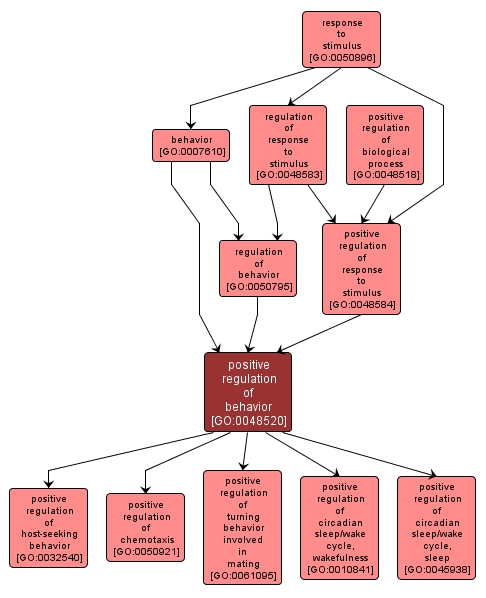GO TERM SUMMARY
|
| Name: |
positive regulation of behavior |
| Acc: |
GO:0048520 |
| Aspect: |
Biological Process |
| Desc: |
Any process that activates or increases the frequency, rate or extent of behavior, the specific actions or reactions of an organism in response to external or internal stimuli. |
Synonyms:
- activation of behavior
- up regulation of behavior
- up-regulation of behavior
- stimulation of behavior
- upregulation of behavior
|
|

|
INTERACTIVE GO GRAPH
|














